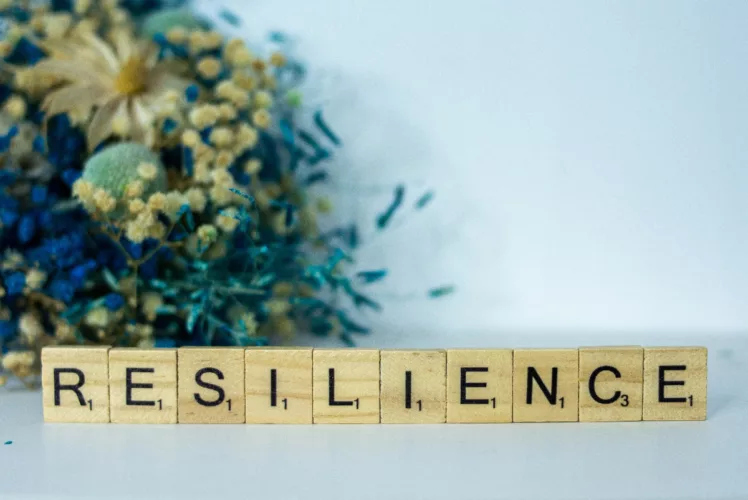Building Resilience at Work

What is resilience?
Resilience is the ability to thrive rather than just survive during challenging times, like change, trauma, and stress threats. Using healthy coping skills, resilient people are able to handle and bounce back from setbacks that life throws at us, even when the world does feel like it’s crumbling around us. Being resilient doesn’t mean that a person experiences less distress, grief, anxiety or suffering than other people do. Instead, they are able to harness their inner strength to deal with life’s difficulties, work through their feelings, remain calm, composed and optimistic, and recover.
There are four main types of resilience, which are physical resilience, mental resilience, emotional resilience and social resilience.
- Physical resilience is the body’s ability to adapt to and recover from physical demands, illnesses, and injuries.
- Mental resilience refers to a person’s ability to adapt to and embrace change, new situations or uncertainty.
- Emotional resilience involves being able to regulate emotions during times of stress.
- Social resilience is the ability of groups of people to respond to and recover from difficult situations together. It’s about creating a social network, finding strength in numbers, sharing experiences, and building a stronger community.
Examples of resilience at work
Workplaces are often ever-changing and can be stressful environments. During our working life, we are likely to encounter various stressors, setbacks, and changes. Resilient employees are able to solve problems, face challenges, perform under high pressure and recover from mistakes.
Here are some more examples of showing resilience at work:
- Adapting to new situations
- Maintaining a positive outlook
- Using constructive feedback as a catalyst for personal growth
- Excelling at time management despite unexpected disruptions
- Remaining calm and making informed decisions during crises
- Setting clear boundaries for a healthy work-life balance
- Multitasking effectively and staying focused under pressure or in times of change
- Bouncing back from setbacks with determination to succeed
- Boosting team morale and fostering collaboration
- Embracing uncertainty and maintaining productivity
- Learning from past experience and failure to drive future improvements
- Pursuing continuous learning, including learning new skills for personal and professional development
- Being innovative and proactive in finding solutions and resolving problems
- Not being closed off to opportunities
How to build resilience at work
Of course, building resilience at work is not going to happen overnight. It is a skill that people need to work on and grow over time. But fortunately, resilience can be learned. Having a resilient workforce has many benefits for the business; employees are more motivated, productive, capable of dealing with change, less susceptible to burnout and have less absenteeism. Upskilling and reskilling are essential elements in building a resilient workforce. Investing in resilience training or resilience coaching for your employees empowers them to develop skills that increase their resilience and adaptability to change. Think of them like athletes – they are coached to give their best performance, and your team members should be no different.
Here are some ways people can build resilience at work:
- Seek support from your social network – Having strong, positive social supports can help people to share their problems and their feelings, find possible solutions or new opportunities and offer support in managing stress.
- Take care of yourself – Pay attention to your physical and mental health. Eat healthy, get plenty of sleep, practice stress management and relaxation techniques, stay hydrated, and exercise regularly.
- Reframe negative thoughts as opportunities for success, not a personal threat; focus on the positives, making small changes along the way.
- Learn from mistakes – try to view mistakes as learning experiences. Think of how you’ve coped with challenges in the past and what skills and strategies you used. Make an effort to build up your skills over time to help you deal with stressful situations more easily next time.
Resilience is key to creating an agile workforce, so if you need any advice or guidance on how to create this within your workplace, please feel free to contact one of our team at MAD-HR who will be happy to help.
Photo by Alex Shute on Unsplash



